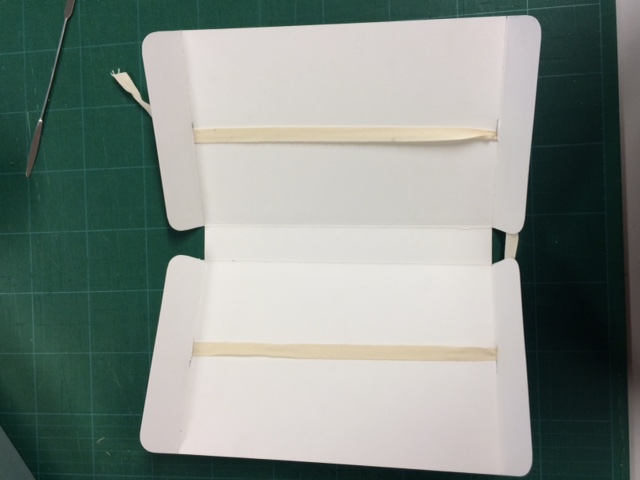Hello, my name is Katharine – I’m the new Intern with the Conservation department at the Centre for Research Collections. Having spent the last four years working in collections care in historic houses, I was keen to branch out and experience a different working environment in conservation. I’m thrilled to have been given this opportunity to work with the research collections at Edinburgh University. It has been interesting to learn about the challenges of managing a working research collection and the conservation issues that come with it.
I’m working with Project Conservator, Emily Hick, for 10 weeks, to conserve and rehouse a collection of Greek books owned by John Stuart Blackie, Professor of Greek at Edinburgh University from 1852 to 1882. The collection was largely in poor condition; most of the books were very dusty and had suffered some degree physical damage from years of use and exposure. In this state, many of the books were unable to be used by researchers without suffering further damage. The aim of this project is to stabilise and protect the collection and thus making it accessible to researchers.
The first step of the project was to surface clean the collection. To save time only the edges of the text block and end papers of the books were cleaned, as these are typically the areas where most dust accumulates on books. I started by removing loose surface dirt using a vacuum cleaner with on low suction setting and a soft brush attachment. I then removed the ingrained surface dirt using smoke sponge.
 An example of a dusty book before surface cleaning
An example of a dusty book before surface cleaning
As I finished cleaning each shelf of books Emily started the interventive conservation treatments, which has included consolidation of red rot, and re-attaching loose boards and spines.
Once the books have received their treatment rehousing can begin. Each book is to be given its own made-to-measure enclosure made of acid-free box board. The book enclosures are a relatively simple design. The box board is cut to fit the book’s shape as closely as possible, folded together and fastened with cotton archival tape. By using this design we avoid using adhesives which release potentially harmful gases that may damage the books.

 Finished book enclosure
Finished book enclosure
The enclosures will protect the books from physical damage caused be handling, and in addition will act as a barrier against dust and the environment while the books are in storage.
 Books looking happy in their new enclosures
Books looking happy in their new enclosures
Keep an eye out for future posts about this project over the next couple of months!
